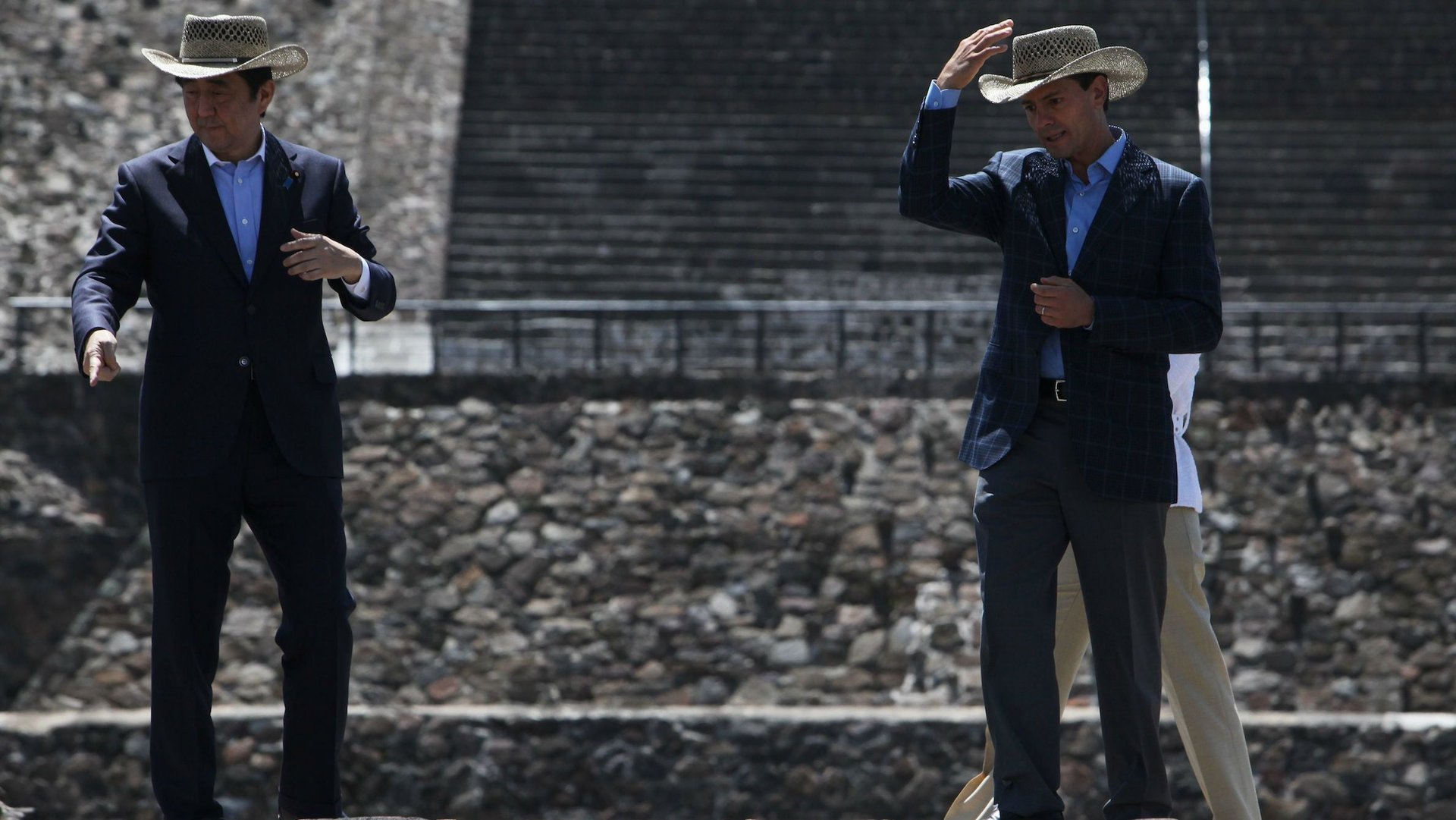The diplomatic battle between China and Japan is taking a Latin American road trip
When Japanese prime minister Shinzo Abe appeals to officials and business people in Central and South America this week, his hosts will be comparing him to another recent visitor: Chinese president Xi Jinping.


When Japanese prime minister Shinzo Abe appeals to officials and business people in Central and South America this week, his hosts will be comparing him to another recent visitor: Chinese president Xi Jinping.
Xi wrapped up a nine-day visit to the region last week, and now Abe is making his own nine-day tour, seeking energy deals, markets for its consumer goods—and perhaps most importantly—geopolitical allies. That makes Latin America the latest soft power and economic battleground for China and Japan, trade partners who are also locked in a bitter and long-running rivalry. (Other regions in play include Central Asia, Africa, and Southeast Asia.)
So far, Abe has struck deals between Mexico’s state oil firm Pemex and Japan’s development bank, as well as the Japan Oil, Gas, and Metals National Corporation. He is now headed to Trinidad and Tobago where he’ll likely lobby on behalf of his country’s bid for a rotating seat on the United Nations Security Council, which Beijing vociferously opposes.
As Quartz has pointed out, few Latin American countries are eager to choose between the world’s second and third largest economies. But even if they did, one could argue that the two sides are pretty evenly matched.
The government in Tokyo lacks the raw investment and trade volume that Beijing can offer (China is the largest trading partner of Brazil, Peru, and Chile) but it also doesn’t have to carry the same negative baggage that China has accumulated after years of exporting cheap goods to the region. “While we’re all happy with one side of the story—enjoying the high price for our commodity exports—the economic impact on the currency and manufacturers can be very negative,” Colombian finance minister Mauricio Cárdenas told Bloomberg last year. Though majorities in several Latin American countries view China favorably, opinions toward the country have declined in Brazil and Argentina since 2011 and remain low in Colombia, according to recent surveys by Pew Research (pdf, p.29).
While Chinese exporters compete with local manufacturers for low-margin goods, Japan is targeting Latin American consumers with branded goods that are less seen as direct competitors, from probiotics drinks and instant noodles to Toyota, Honda, and Nissan cars. Japan’s close ties with the United States and its participation in the Trans-Pacific Partnership, which includes Mexico, Peru, and Chile, could also give it an edge. Cultural ties are important too. Some 1.78 million ethnic Japanese also live in Central and South America in areas like Liberdade, a district in Sao Paolo that has the world’s largest Japanese community outside of Japan.
While Xi’s trip was largely focused on business deals—other than a trip to China’s old ideological ally, Fidel Castro—Abe looks set to score some diplomatic points, according to his advance itinerary. Brazil is expected to sign a joint statement with Japan on the two countries’ mutual respect for rule of law and the importance of free and safe navigation in international airspace and the high seas—a statement aimed at Beijing’s actions in the East and South China Seas. Colombia is expected to sign a similar statement.